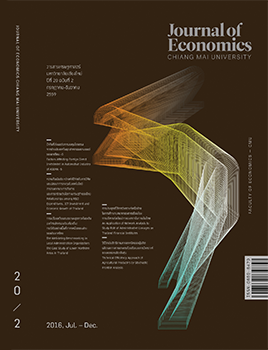The Well-being Benchmarking in Local Administration Organization:
Abstract
The aim of this document is to report the benchmarking of local administration organization of ‘Well-Being’ of regional local populace by applying the established 10 well-being indicators which were developed under the “Research and Benchmark on Health and Well-being Effectiveness” directive: 1) Health care 2) Security and Safety 3) Disaster recovery and contingency plans 4) Welfare management 5) Sustainable agriculture 6) Learning and education system 7) Natural resource management 8) Environmental management 9) Community participation management 10) Economy The research was conducted based on work completed in 2014 by 16 local administration organisation within northern districts of Thailand.
The research has found that the majority of the 16 authorities fall within the Medium level. These local administration organisations have strength in terms of security and safety due to their location in rural and semi-rural areas. Residential properties are built in close proximity to each other which helps to create tight-knit community/neighbourhoods. As a result, people are friendly and help each other when facing difficulties. However, the authorities have challenges in developing sustainable agriculture.
The research result indicates that benchmarking local administration organisation of ‘Well-Being’ of local populace is one way of encouraging the local authorities to research, improve and exchange their successful strategies amongst other authorities in order to develop better health and welfare and improve the standard of living for residents in their local areas.
Downloads
Additional Files
Published
Issue
Section
License
All opinions and contents in the CMJE are the responsibility of the author(s). Chiang Mai University Journal of Economics reserves the copyright for all published materials. Papers may not be reproduced in any form without the written permission from Chiang Mai University Journal of Economics.
ข้อคิดเห็นที่ปรากฏและแสดงในเนื้อหาบทความต่างๆในวารสารเศรษฐศาสตร์มหาวิทยาลัยเชียงใหม่ ถือเป็นความเห็นและความรับผิดชอบโดยตรงของผู้เขียนบทความนั้นๆ มิใช่เป็นความเห็นและความรับผิดชอบใดๆของวารสารเศรษฐศาสตร์ มหาวิทยาลัยเชียงใหม่
บทความ เนื้อหา และข้อมูล ฯลฯ ในวารสารเศรษฐศาสตร์มหาวิทยาลัยเชียงใหม่ ถือเป็นลิขสิทธิ์เฉพาะของคณะเศรษฐศาสตร์มหาวิทยาลัยเชียงใหม่ หากบุคคลหรือหน่วยงานใดต้องการนำทั้งหมดหรือส่วนหนึ่งส่วนใดไปเผยแพร่ต่อหรือเพื่อกระทำการใดๆ จะต้องได้รับอนุญาตเป็นลายลักษณ์อักษร จากวารสารเศรษฐศาสตร์ มหาวิทยาลัยเชียงใหม่






